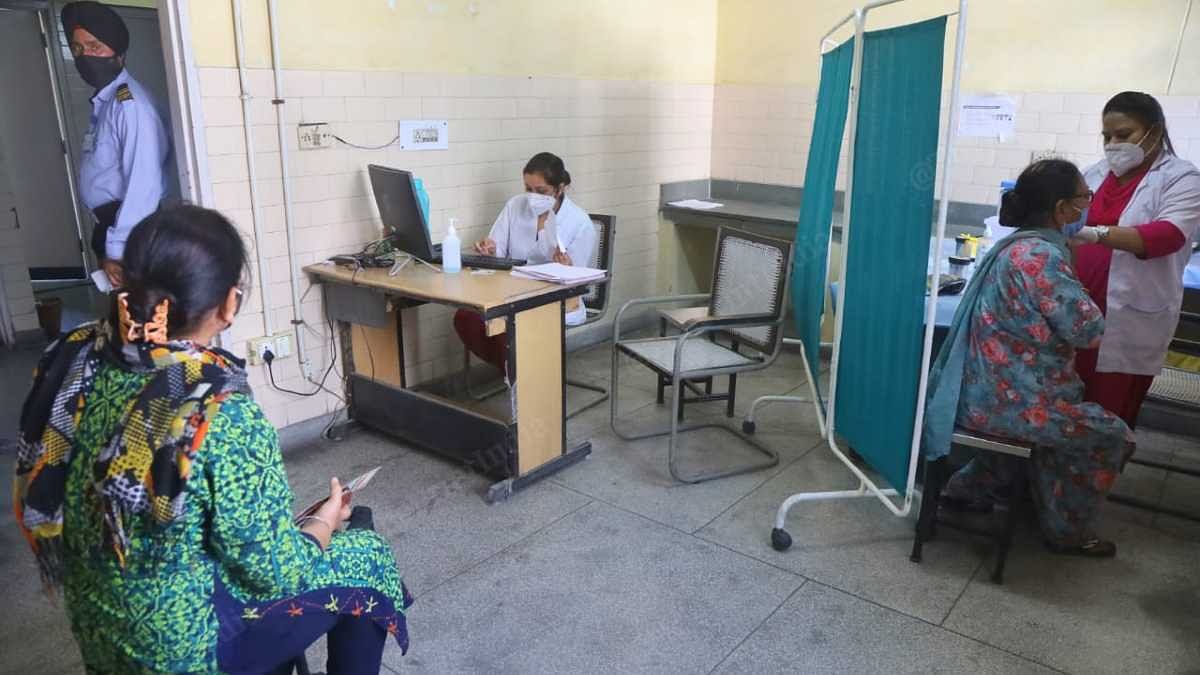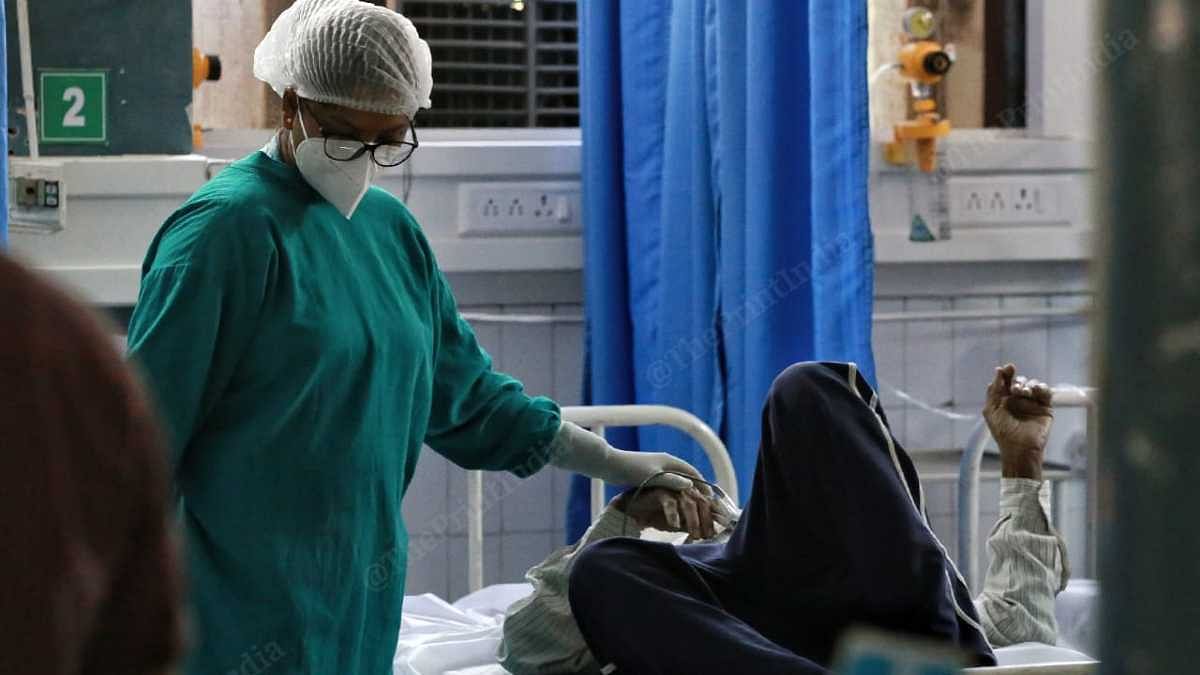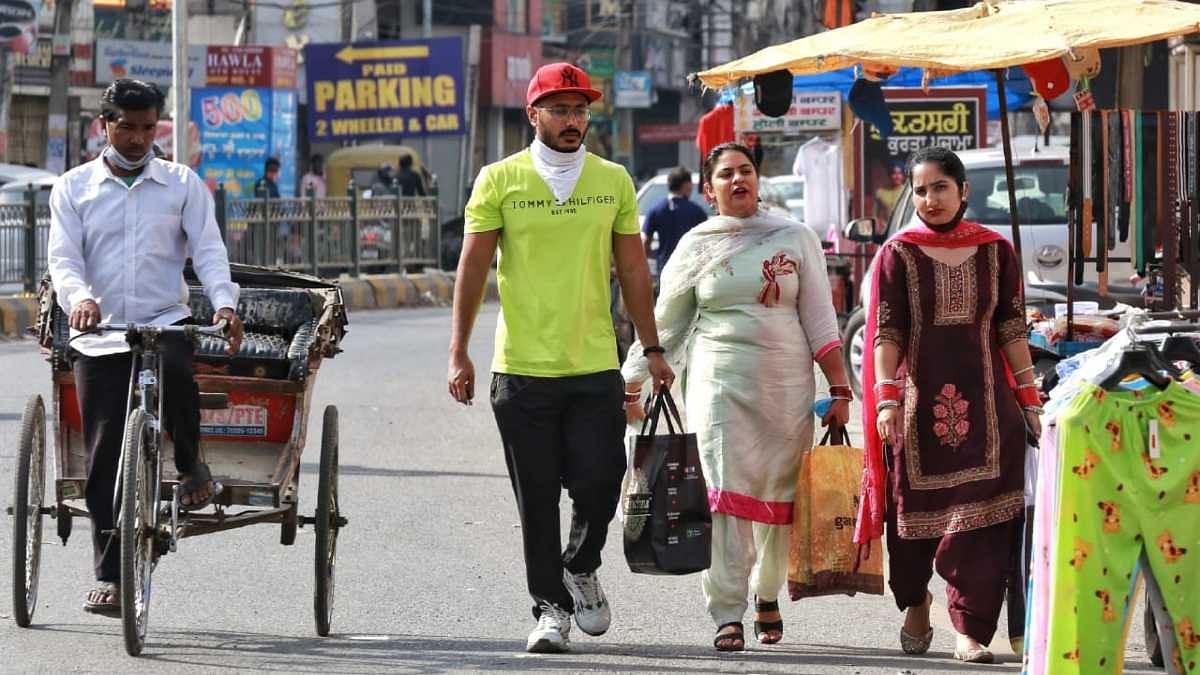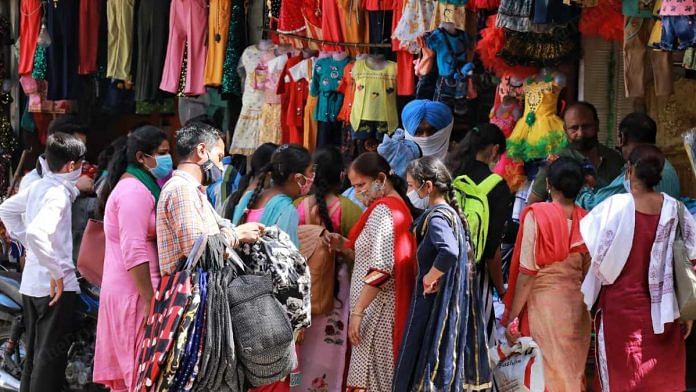Patiala/Ludhiana/Hoshiarpur/Jalandhar: As India sees a second and a more deadly wave of Covid-19, Punjab finds itself among eight states that make up 84 per cent of the total cases. The fourth worst affected state, Punjab has so far recorded 2,38,785 total cases, of which 25,458 are active and 6,983 have died.
Many factors are to blame for the latest surge worrying Punjab — delayed hospitalisation, comorbidities of patients, and so on. But the real bane is poor contact tracing.
Contact tracing — the practice of identifying all those who had come in contact with a positive patient — is key to breaking the virus’ chain of transmission. On average, Punjab traces about 15 Covid contacts, as opposed to the 25-30 target set by the Union health ministry. In its poor performing districts, the number is even lower; anywhere between 1.4 to 9.9 contacts are traced per positive patient.
Add to this mix a UK virus variant that is 70 per cent more contagious as well as a complete disregard by people for Covid compliance, and Punjab’s job to contain the disease spread exponentially gets tougher.
When ThePrint visited several of the worst-hit districts, including Ludhiana, Patiala, Jalandhar, Hoshiarpur, Anandpur Sahib and SAS Nagar, people could be seen wearing masks incorrectly or not at all while social distancing was barely being practiced.
On the day vaccination for all above the age of 45 began, Punjab scaled a new coronavirus peak — registering a record daily high of 3,187 cases on 1 April. The state’s case fatality ratio (CFR), which has consistently been the highest in India for many months, currently stands at 2.93 per cent, more than double the national average of 1.34 per cent.
Also read: Pharmacies were supposed to track Punjab’s mild Covid cases, but this is why plan failed
Why contact tracing strategy is failing
Of the several red flags raised by the Centre in Punjab’s handling of the outbreak, one of them was the delay in testing contacts and failing to quarantine them. Union Health Secretary Rajesh Bhushan and NITI Aayog member, health, V.K. Paul had instructed Punjab to conduct “house-to-house surveillance and identify active cases for timely testing, contact tracing and swift isolation.”
Reports also noted that several districts were falling short of tracing the 15 contacts-per-positive-case mark set by Chief Minister Amarinder Singh.
Among the worst performing districts are Mukstar (1.4 contacts per positive case), Tarn Taran (7.2), Kapurthala (7.6), Sangrur (8.8), Bathinda (9.5), Nawanshahr (9.9) and Barnala (9.9). Punjab Covid-19 nodal officer Dr Rajesh Bhaskar reportedly said that a meeting was held with officials in these poor-performing districts, telling them to ramp up contact tracing.
ThePrint spoke to three positive patients in different districts of Punjab, who requested anonymity, and found that contact tracing had not yet been conducted. According to Dr Bhaskar, primary, secondary and tertiary contacts are traced within 72 hours (3 days) of a patient testing positive. The three people mentioned above received their report six days ago, on 29 March.

Civil surgeons across districts maintain that contact tracing has now been ramped up to 13-15. State Health Secretary Hussan Lal told ThePrint that contact tracing has been increased to 16 from 10.
“Highest contacts of a positive patient are tested on 5th/7th day if asymptomatic and on the same day if symptomatic. We instruct them to quarantine till they are tested. There are a few incidents where people don’t quarantine when they should be and are adding to the spread,” Dr Bhaskar told ThePrint.
Relying on studies to emphasise how transmission can be contained with proper restriction, the Union health ministry said, “One infected person could spread Covid-19 to an average of 406 other individuals in a 30-day window without restrictions, which could be reduced to just 15 by decreasing physical exposure to 50 per cent and to a further 2.5 (average) by decreasing physical exposure to 75 per cent.”
Punjab has set up containment (over five cases) and micro-containment zones (over 15 cases) across the state. As of 1 April, there were nine containment and 77 micro-containment zones.
Also read: Severe Covid infections & younger patients — why Punjab’s ‘NRI belt’ blames UK variant for surge
Delayed hospitalisation, comorbidities
After suffering from breathlessness for some time, a man in his 60s had gotten tested for coronavirus in the last week of March. Results showed that the Hoshiarpur resident, who was already suffering from a chronic heart disease, had contracted the virus. Despite his deteriorating condition, both him and his family didn’t feel the need for hospitalisation. They believed the breathlessness wasn’t because of Covid but due to his heart condition. He died the day he tested positive.
According to authorities, this case is representative of what is happening across the state.
Carefully monitoring secondary and tertiary care facilities has become the need of the hour. “How many patients are there in the secondary care facilities, whether they need to be referred to the tertiary care facility … In the tertiary care facilities, how many are on ventilators, how many in ICU … These are some of the pointers we are keeping a close eye on,” Punjab health secretary Lal said.
Currently, there are 8,000 secondary care beds, 1,500 tertiary care beds, and 999 ventilators across the state. “However, only 10 per cent ventilators are utilised, while 50-60 per cent of the ICU beds are occupied,” Lal said.

An expert group headed by Dr K.K. Talwar, advisor to the Punjab government on Covid-19, is monitoring these facilities every day. “Earlier we used to meet once a week, but since cases began rising exponentially the past one month, we meet every day. Several experts from the US and UK are also there,” Talwar told ThePrint.
Underlining the issue of delayed hospitalisation, Lal said in the initial days, people were dying within 48 hours of being admitted. “People dying of comorbidities are in the tertiary care facilities for two-eight days [now],” he added.
Civil surgeons from Ludhiana, Jalandhar, Hoshiarpur and Patiala all echo the same concern. Despite repeated efforts to spread awareness about the dangers of contracting and spreading coronavirus, people continue to come to the hospital when their condition is precarious, they said.
Severe comorbidities such as obesity, high blood sugar and hypertension — all of which are relatively higher in Punjab as compared to the national average — only compound an already difficult situation.
Testing in the state has been scaled up to 35,000 a day from 20,000 a day, 90 per cent of which are RT-PCR tests, Lal said. Meanwhile, CM Amarinder Singh noted that Punjab’s tests per million was higher than the national average.
Owing to a high prevalence of the UK strain in the state — 81 per cent of 401 samples tested positive for the more contagious variant since January this year — curbs on gatherings and night curfews have been extended till 10 April.
Also read: How Covid-19 is striking back with a second wave — lessons from the three worst-hit states
Home isolation
Monitoring home-isolated patients is another front where the battle against the spread of Covid-19 is being fought.
The Punjab government has adopted a two-pronged approach to this. One is the ‘Corona Fateh Kit’ that has about 16-17 items, including a thermometer, pulse oximeter, steamer, vitamins and other flu medication which are given to every home-isolated patient free of cost.
“We began distributing this during August-September. Till now, a total of 80,000 kits have been consumed. Another tender for 30,000 kits was opened on 1 April,” Lal said.
The second approach is bringing on board a private home healthcare service — Health Vista, a consortium of three companies — whose role is to monitor home-isolated patients on a daily basis.
“They were brought on board on 2 October and continued to work with us till mid-January when we began noticing a dip in cases. They were rehired on 17-18 March after cases began skyrocketing,” Tanu Kashyap, managing director, Punjab Health System Corporation, told ThePrint. The Punjab Health System Corporation is a government body for primary health care.
Health Vista currently manages 11,780 home-isolated patients, including 635 in SBS Nagar, 1,349 in Ludhiana, 1,341 in Jalandhar, 1,035 in Hoshiarpur, 1,237 in Amritsar and 1,512 in SAS Nagar.
However, the task is impeded by unwilling patients. “There have been instances where patients tell them they don’t need these calls. We were getting feedback that patients were getting too many calls, but this is needed to help curb the spread. Patients have even yelled at the callers and slammed the phone on them. The company persists for three days before giving up and saying that the patient isn’t cooperating,” Kashyap said.
Also read: Over 32,000 cases, 1,100 deaths: Why Ludhiana is among India’s worst-hit Covid districts
The misinformation pandemic
Like most parts of the country, Punjab also has to tackle misinformation, myths and fake news. Lal says social media is largely to blame for this, and noted that it adversely impacted the state’s efforts in managing the outbreak, particularly in July-August last year.
“Misinformation was spreading about the government getting Rs 3 lakh per Covid-19 death, organ harvesting and dissuading people from getting tested. State took very strong action … several FIRs were filed and the issue was contained,” he said.
One of the most noticeable impacts of such misinformation is the lack of social distancing, a simple yet effective measure to curb Covid-19 spread.

“Covid toh khatam ho gaya, government jhooth bol rahi hai (Covid is over, the government is lying),” is a common refrain among the people ThePrint spoke to across districts.
“People aren’t afraid of Covid anymore like they were last year. They pick fights with us if we ask them to wear their mask or challan them. They will wear it properly in front of us but the second they are out of our sight, they remove it,” said Sukhjit Singh, who is part of Mohali’s rapid response team.
Lal also blames social media for the initially slow uptake of vaccines among citizens. The process has since picked up pace. Nearly 50,000 people above the age of 45 were vaccinated on 1 April. A total of 3,59,506 healthcare and frontline workers in the state received the first dose while 1,08,994 received both doses.
CM Amarinder Singh claimed that had the Centre allowed all above 45 to be vaccinated two months earlier, the situation would have been under control now. However, civil surgeons across districts counter this.
“People would still have been hesitant to get vaccinated. Allowing it two months earlier would have made no difference,” said Dr Satinder Singh, Patiala civil surgeon said.
(Edited by Manasa Mohan)
Also read: Thousands gather for Hola Mohalla festival in Punjab, give masks & social distancing a miss




I am a resident of Punjab. My mother was tested positive 10 days ago No family member has been approached forget about being tested. Ground reality is quite different from what government officials claim or what you have reported. No so called fateh kits are being distributed. My maternal uncle is in CMC Ludhiana. Same situation there too, no kits, no testing of family members. More over the exorbitant bills of the private hospitals cost fortune to the middle class families.
I am a resident of Punjab. My mother was tested positive 10 days ago No family member has been approached forget about being tested. Ground reality is quite different from what government officials claim or what you have reported. No so called fateh kits are being distributed. My maternal uncle is in CMC Ludhiana. Same situation there too, no kits, no testing of family members. More over the exorbitant bills of the private hospitals cost fortune to the middle class families.